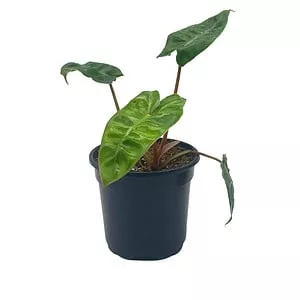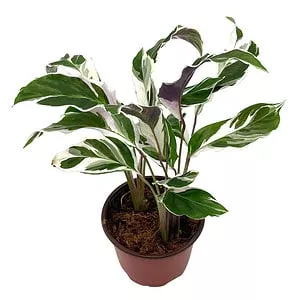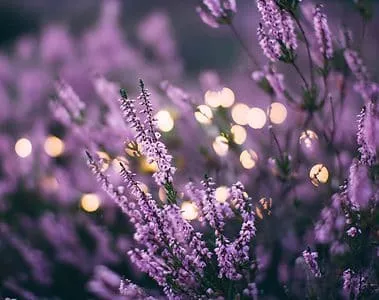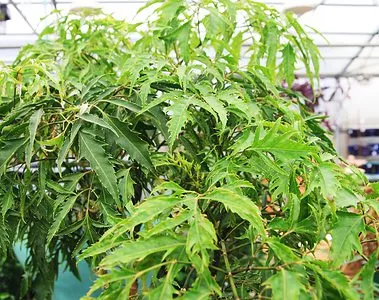No products in the cart.
Table of Contents
In the plant kingdom, you find many species with the same common name: ice plants. Yet, the most popular ones are the Delosperma and Lampranthus.
These are your warm-weather perennial groundcover plants that return every year. This low-maintenance plant blooms are bright and colorful.
Today, we will look at caring for the purple ice plant or Delosperma haworthii.
Caring for Purple Ice Plants

The name ice plant comes from the tiny hairs found on the foliage; when light reflects on it, you see a resemblance to ice crystals. The foliage is succulent-like and changes to darker shades when temperatures drop.
Yet, in warm climates, the plant grows as an evergreen. You find the plants in spreading form as ground cover and can thrive depending on the type. The ice plant blooms in spring and can continue throughout the growing season.
These are fast-growing plants that look fabulous in rock gardens. Yet, you can also grow the hardy ice plant in containers as they fill up the pot fast, spilling over the sides. Interestingly, these plants can grow at higher elevations in drought-like conditions and help with erosion control in the garden.
Ice Succulent Plant Care

If you want a long, blooming, hardy ice plant ground cover to control erosion, this succulent will thrive in a sunny spot in your garden. The best part is it is deer-resistant and can thrive in direct sunlight. Your garden will be filled with blooms in mid-spring and summer-long blooming.
The purple-to-pink flowers look like a frost blanket and thrive in the USDA hardiness zones 8-10.
Soil
You need rich soil with good drainage for your ice plant, ground cover, or growing container plants. Your ice plants are drought-tolerant plants that do not enjoy standing in constantly moist soil or dense clay soil. It prefers a mix of sandy loam or gravel soils and need not be nutrient-rich.
These plants thrive in hot climates and are cold-hardy plants and drought-tolerant.
Lighting Needs

Whether you grow your ice plant in a container or a rock garden, it thrives in full sun to flower. If your plant becomes sun-starved, it develops into leggy to weak growth. So, provide your ice plant Delosperma haworthii with at least six hours of direct sunlight.
The plant can handle light shade in mid-summer but prefers bright light.
How to Water Ice Plant in Rock Gardens
As mentioned, your hardy ice plant loves well-drained and not wet soil. So, water sparingly in the growing season once your plants become established. You can provide weekly watering in dry climates if no rainfall is grown outdoors.
The important thing, whether grown as an indoor plant or outside, is that your plant needs dry soil and not wet soil when watering. Allow your plants to dry out during cold temperatures. If you get snow in your region, mulch around your plants to protect them against cold weather.
The problem with too much water results in the rotting of the root.
Temperature and Humidity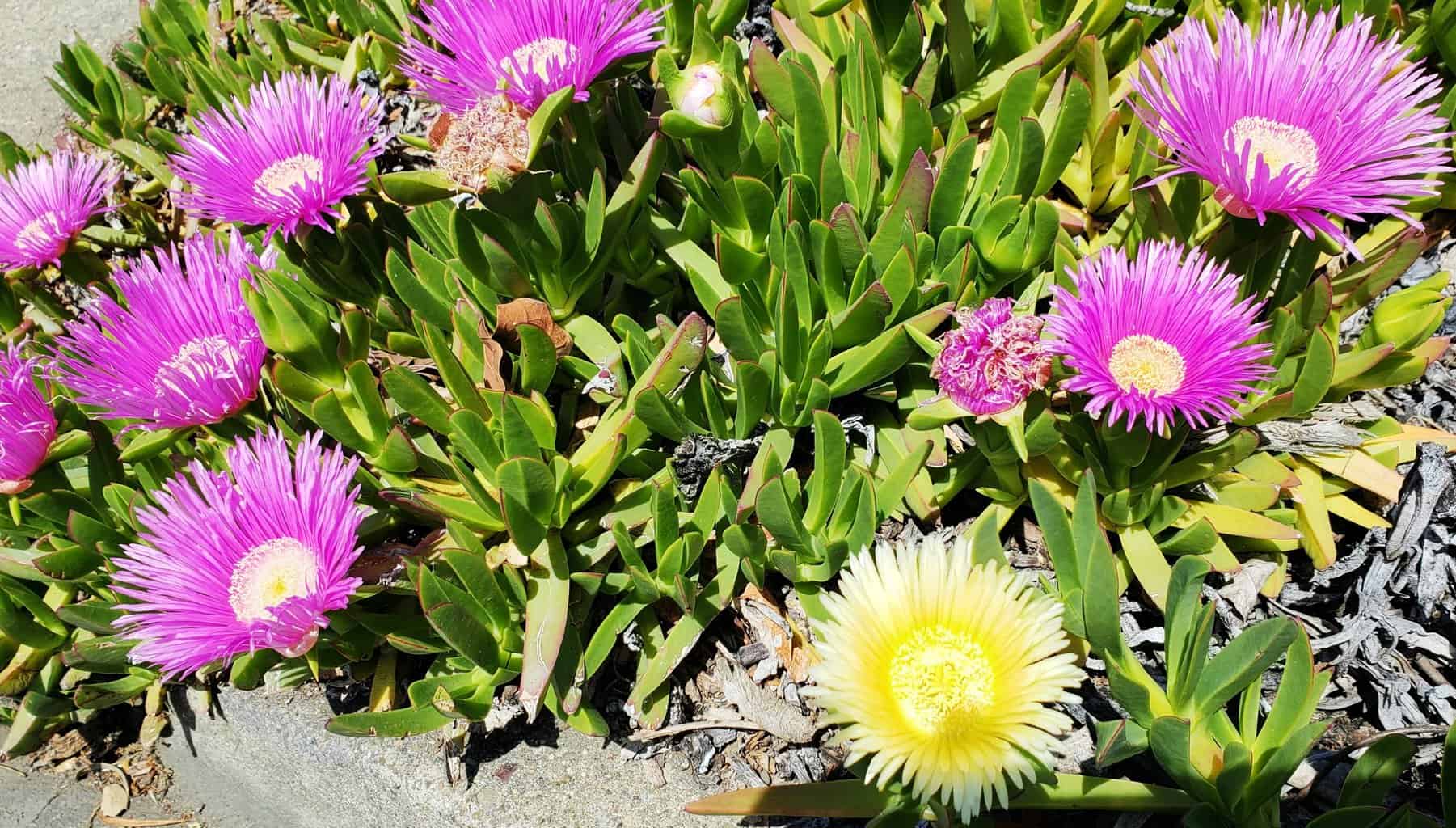
No matter what ice plant you have, not all of them are cold-hardy, making them sensitive to colder climates. The best is to check the USDA hardiness zones where you can grow your plant outdoors as a perennial. If you live in freezing temperatures, it might be best to grow your plant indoors when it comes to ice plant care.
The ice plant Delosperma prefers hot, dry environments.
Nutrients Needed for Growing Ice Plants
A helpful thing for most ice plants is to add compost to the well-drained soil or use a slow-release fertilizer. The best is to follow the instructions provided.
Your hardy ice plant does without feeding outdoors but will benefit from feed grown in containers. It will help your plant bloom and deliver healthy growth.
You can add pine needles to the soil as compost or use them as mulch around your plants.
Getting Your Ice Plants to Bloom
The blooms for ice plants vary from one species to another. Yet, it displays daisy-like flowers in vivid colors with narrow petals when it does flower.

The blooming period is in spring and can last for weeks. You may even see some species blooming more than once a year.
If you want your ice plant to bloom more often, it helps to deadhead buds by removing the spent flowers. Also, provide your plants with enough light and a boost of fertilizer or compost.
Ice Plant Propagation
One thing that you will love about ice plants is that they can self-seed to propagate if you leave them alone naturally. The stems spread from the parent plant and start rooting by themselves. You can then snip the stem or dig it up carefully to transplant.
Alternatively, you can use the division method as it helps to revive your mature plants. The best time to divide your mother plants is during spring. You can also do this when repotting your ice plant into the new soil.
Another notable thing is as they do spread fast, they are invasive species that need to be planted by themselves on sunny slopes or in a garden bed.
Ice Plant Varieties
Here are some of our favorite ice plants you can grow in the garden or at home in a container or as ground cover:
Delosperma brunnthaleri

It is a hardy ice plant you can grow as a ground cover in the landscaping. It reaches two inches tall and two feet wide. The suitable hardiness zones are four to nine and display yellow flowers.
Delosperma floribundum Starburst
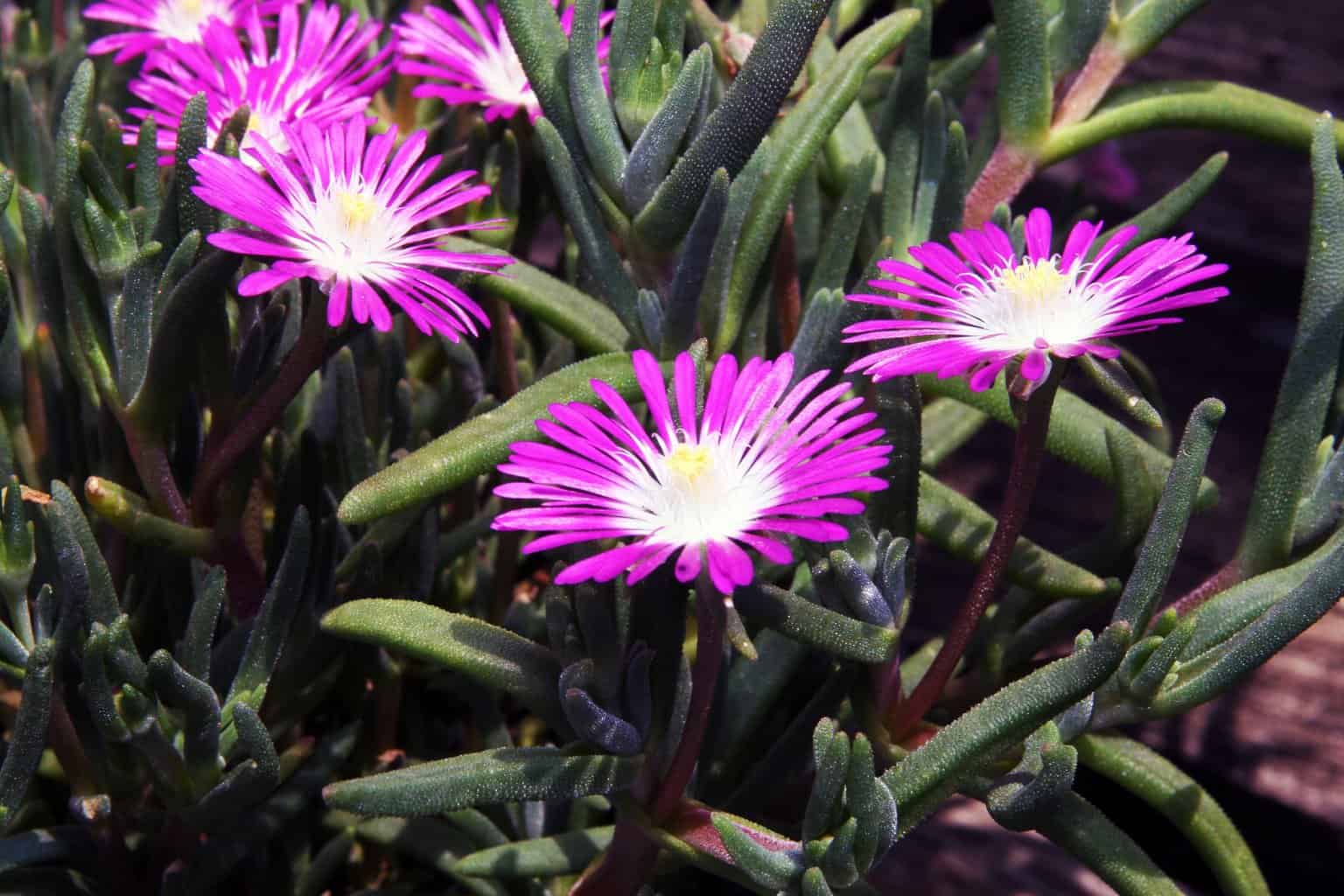
The starburst loves gravelly soils, and it is a mat-forming cultivar with gorgeous pink flowers with white centers. It grows six inches tall and is suitable to plant outdoors in zones six to ten.
Delosperma cooperi

The Delossperma cooperi displays magenta flowers and can grow up to six inches tall in zones six to ten. Another common name for this succulent is Cooper’s ice plant.
Lampranthus aurantiacus
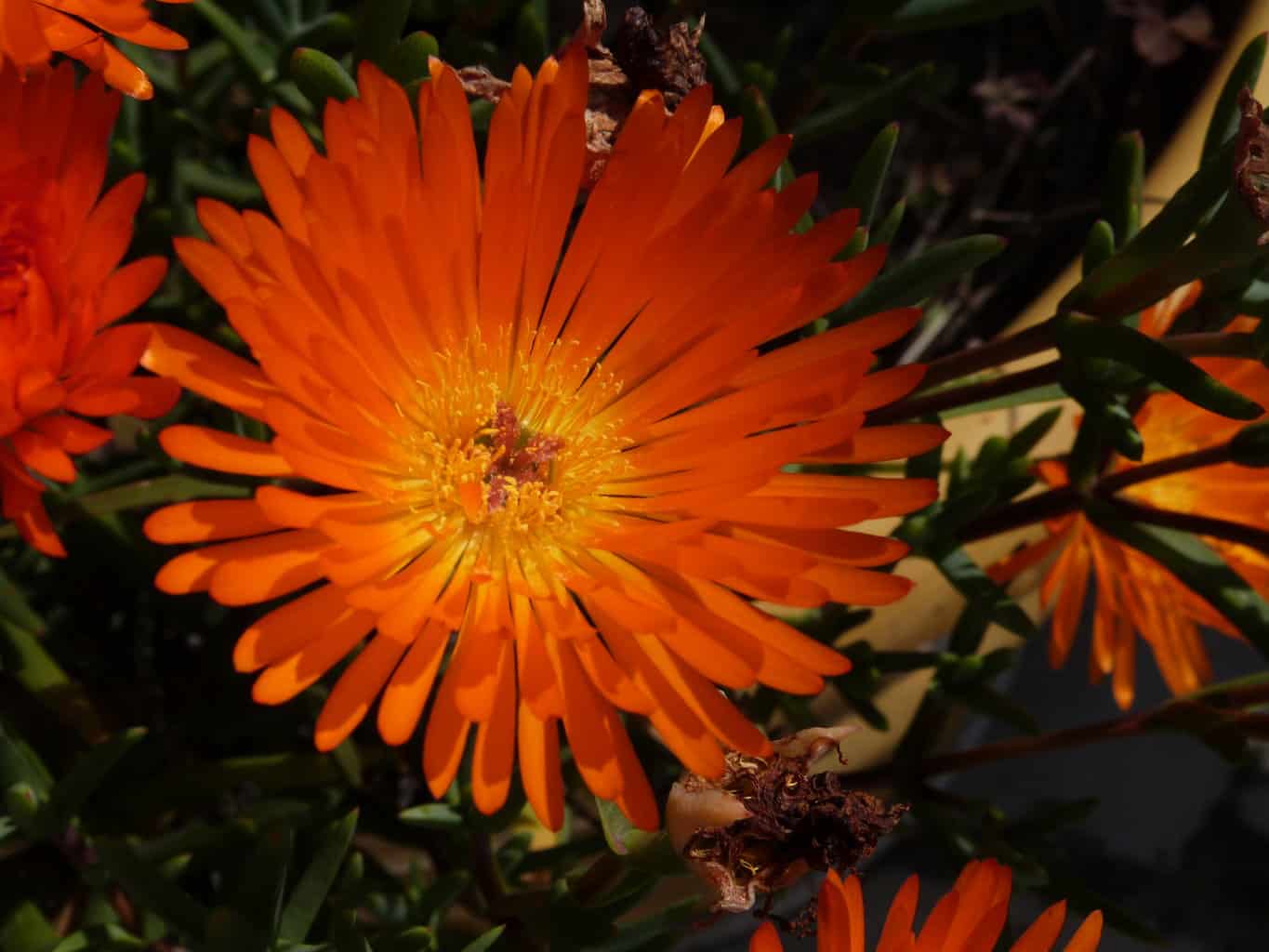
It is another ice plant with bright orange flowers with an upright growth that reaches up to 18 inches tall in zones nine to eleven.
Common Pests and Problems
The most significant pests are aphids and mealybugs, which become a problem. You can look at the leaves or the stems to find the sticky residue left behind by these insects. You can use some rubbing alcohol on a cotton swab for small infestations.
Other problems can be leaves falling off with stems withering. Finally, it can be overwatering, resulting in the rotting of the roots. For this reason, providing well-draining soil is crucial, leaving it to dry completely in between watering. If you notice yellow leaves, it also results from overwatering.
Frequently Asked Questions
This succulent plant has become a famous indoor plant. Although they’re outdoorsy in their natural habitat, they can also be grown indoors near a sunny window. It’s more likely to thrive if you have high humidity at home.
Watering issues, inadequate light, and potting media is the leading cause of why succulents die. Succulents don’t like to be overwatered, as it can lead to root rot. Instead, succulents can store water in their stems and leaves. So they can survive with less watering.
They need bright light to grow healthy. Placing plants in a very dark corner of your house is not ideal. If not enough light is getting into your home, invest in an artificial light source. Potting mix is also one of the reasons why your plant will look unhealthy. Use succulent or cactus mix in a pot with excellent drainage.
As mentioned above, if your ice plant is grown in a container, slow-release fertilizer is necessary to help your plant to bloom. You can also add compost to your mix during its growing period to encourage healthy roots, stems, and foliage, leading to healthy blooms. Remember, exposing them to bright light also benefits the ice plant to flower.
To ensure continuous blooming of an ice plant, provide well-draining soil, full sun exposure, and avoid overwatering. Deadhead spent flowers regularly to encourage new blooms and maintain a healthy growth environment.
Yes, ice plants are generally low-maintenance. They thrive in well-draining soil, require minimal water, and can tolerate various soil conditions and temperatures.
Yes, ice plants have a tendency to spread quickly. Their trailing growth habit and ability to root where stems touch the ground contribute to their rapid expansion in suitable environments.
Whether you want to buy, sell or simply reach out to other plant enthusiasts, Plantly is the right place to be!
In stock In stock In stock In stock
$20.00
Sold By:
Soul Peace Gardens
Soul Peace Bundle-Tradescantia Pink Panther
Sold By:
Soul Peace Gardens
$44.99
Sold By:
BubbleBlooms
Philodendron Billietiae
Rated 4.81 out of 5 based on 279 customer ratings00
Sold By:
BubbleBlooms
$19.99
Sold By:
BubbleBlooms
Calathea Stella, 4 inch, Rare Variegated Prayer Plant, Cathedral Plant, Green and White
Only 929 available and it’s in 1 people’s basket Rated 4.81 out of 5 based on 279 customer ratings00
Sold By:
BubbleBlooms
Free Shipping
$79.99
Sold By:
CZ Grain
100 world’s fastest growing tree
Only 887 available and it’s in 1 people’s basket Rated 4.60 out of 5 based on 156 customer ratings00
Sold By:
CZ Grain

